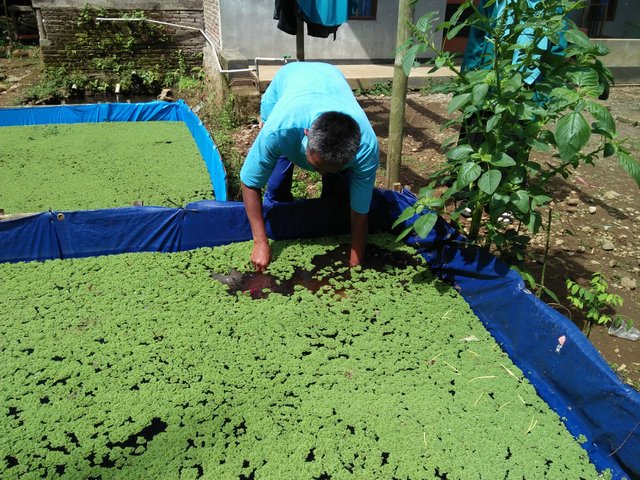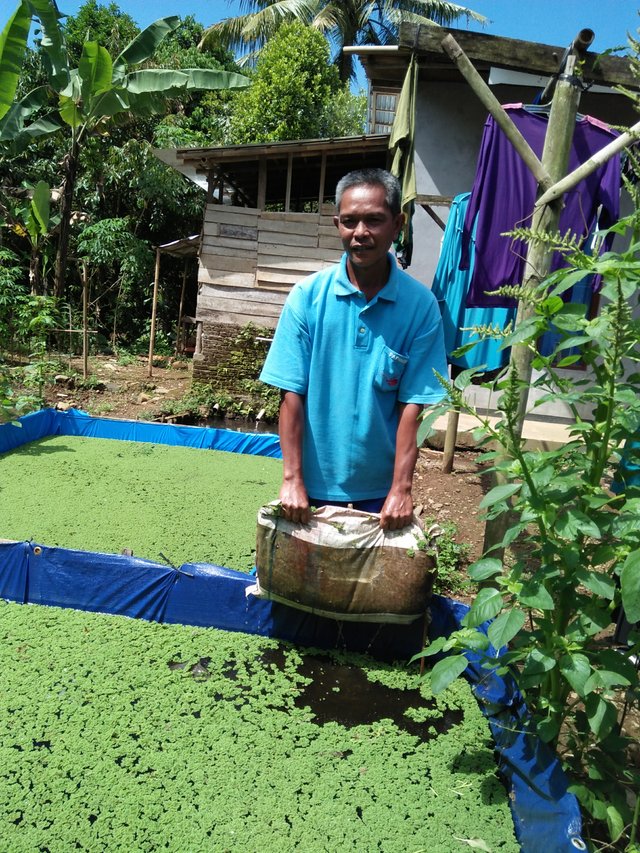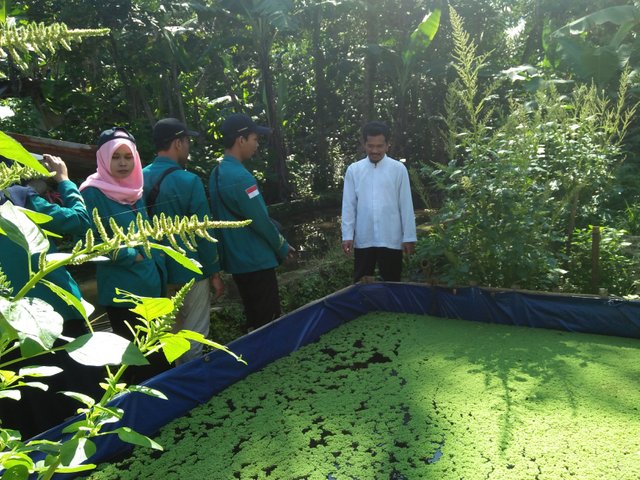
In April yesterday, I was with some friends to meet a farmer in the district of Baturraden, Indonesia. We met him for wanting to learn about Azolla.
The farmer explained that Azolla is the only genus of water spikes floating Azollaceae tribe. There are seven species belonging to this genus. The Azollaceae are now recommended to be incorporated into the Salviniaceae tribe, based on the morphological and molecular studies of Smith et al. (2006)
Seven types of Azolla:

Asia
- Azolla japonica Franch. & Sav. from Japan
- Azolla filiculoides Lam.
- Azolla pinnata R. Br. from Southeast Asia, also from Africa
Africa
- Azolla nilotica Dcne. ex Mett.
America
- Azolla caroliniana Willd., From North America
- Azolla mexicana Presl., From Mexico
- Azolla microphylla Kaulf

Although already introduced and popularized since the early 1990s, it is not many farmers who utilize Azolla plants (Azolla pinnata) for his farm.
Though the benefits of this one water plant quite a lot. In addition to fertilizers and media ornamental plants, Azolla can also be used for animal feed and fish. In Bali, Azolla is often found floating in the waters, rice fields, and fish ponds. Because weeds are considered, the farmers then remove them. Stacked and thrown away.

Azolla sp. many are present in stagnant waters, especially in paddy fields and in ponds, have soft leaf surfaces that are easily developed rapidly and live in symbiosis with Anabaena azollae that can fix Nitrogen (N2) from the air.
In addition to fertilizer and planting media, Azolla can also be used for animal feed, especially ducks and various types of omnivorous fish and herbivores. As animal feed, Azolla nutrition content is quite promising. Protein content, for example, can reach 31.25 percent, fat 7.5 percent, carbohydrates 6.5 percent, dissolved sugar 3.5 percent and crude fiber 13 percent.
When used for duck feed, young fresh Azolla use (age 2-3 weeks) is mixed with feed ration ducks. Based on the results of the study, Azolla mixture of 15 percent into this ration, proved not to adversely affect ducks. That is, the ducks still eat this Azolla blend feed with gusto. Egg production, egg weight, and feed conversion also remain normal. This means the use of Azolla can suppress 15 percent of the cost of purchasing duck feed. Of course, this is quite profitable breeders because it can reduce the cost of purchasing duck feed.